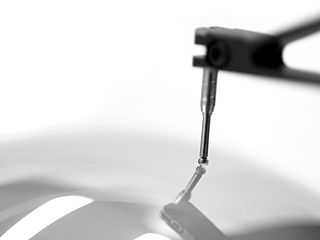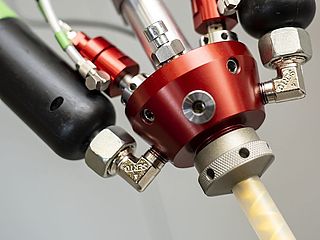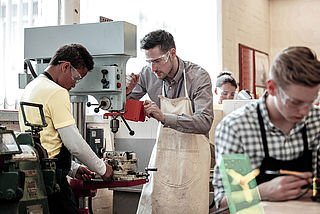
Metrología de alta calidad para el control de calidad en la sala de medición, la producción, la entrada de mercancías o el desarrollo.
Gear Metering Pumps & Meter Mix Dispense Machines with highest accuracy for processing liquids and pastes.
High-precision rotary stroke bearings for backlash-free linear and rotational movements for use in machine and device construction.








Metrología innovadora para una amplia gama de aplicaciones:
- • Longitud y diámetro
- • Superficie y contorno
- • Forma y posición
- • Dentados y árboles

Mezcla y dosificación precisas de líquidos y pastas:
- • Bombas dosificadoras de engranajes
- • Bombas para la producción de fibra
- • Máquinas mezcladoras y dosificadoras y cabezales mezcladores

Guías de bolas para movimientos lineales y giratorios sin holguras en:
- • Construcción de máquinas
- • Mecánica de precisión
- • Óptica
- • Electrónica
- • y muchas otras industrias








Como empresa que desarrolla sus actividades en todo el mundo, Mahr no solo cuenta con patentes en Alemania, sino en muchos otros países.

ISO 21920 in practice

Because some of the previous standards no longer corresponded to the current state of the art, it was not always possible to clearly describe the surface quality of the finished component – "for example, with new production processes such as additive manufacturing", as Kedziora explains: "They pose different challenges for measurement than the usual, ablative processes. That's why a new profile standard was needed after around 40 years." The result: ISO 21920 has replaced previous standards such as ISO 3274, 4287, 4288, 13565 and 1302. The series of standards consists of three parts. The first part deals with the drawing entries and defines the rules for specifying the profiled surface properties. The second part focuses on the parameters and defines the terminology as well as the terms and parameters for determining the surface quality using the stylus method. Finally, Part 3 focuses on the measurement conditions by defining a complete specification operator for the surface finish using the profile method.
Changes in practice
"Overall, all teams have placed great emphasis on continuity during the standardization process. Weak points of the old standard, imprecise definitions or parameters that are no longer practicable have been eliminated," says project manager Kedziora, who was initially responsible for the first and later also for the third part of the internationally valid series of standards during the standardization process. As he emphasizes, nothing was changed where the old standard provided reasonable results. However, where the old standard was unclear, the new regulation is now clearer. As an example, he cites filter settings that were previously dependent on the workpiece. Preliminary measurements would have been necessary, but nobody actually carried them out. "Now it's no longer the workpiece that determines the filter setting, but the corresponding drawing. In addition, the new profile standards offer extended possibilities for functionally relevant product specifications."
